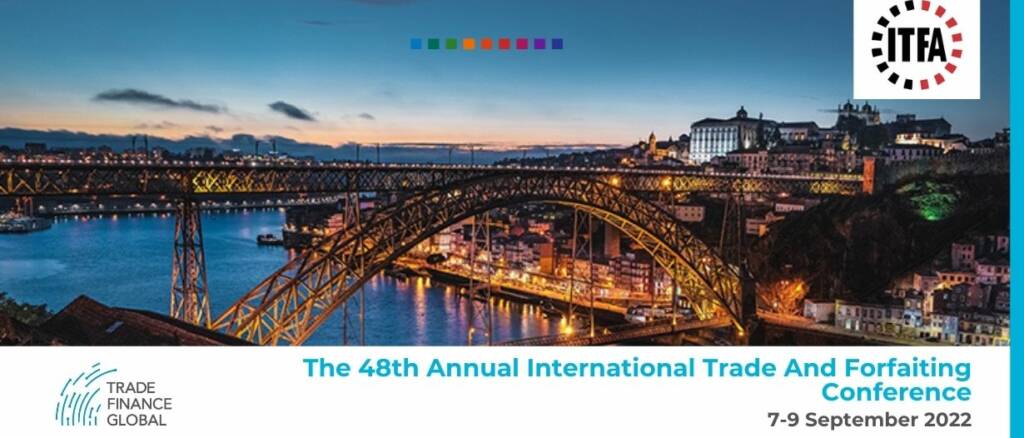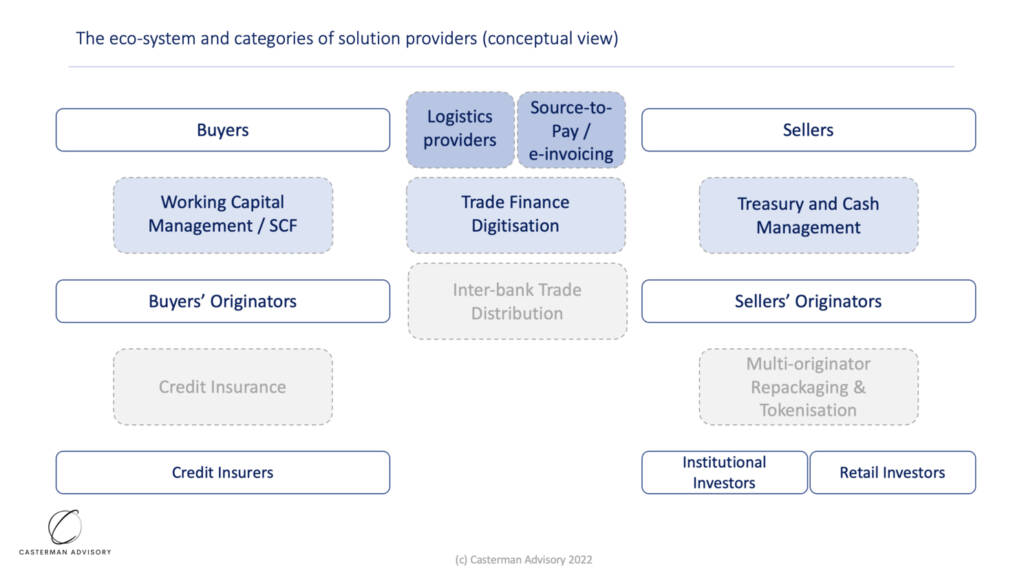Estimated reading time: 7 minutes
The digitisation of trade finance has brought considerable change to the market in recent years.
The shift toward tech has had many positive impacts; increasing operational efficiency, reducing paper-based processes, and minimising costs. Moreover, digital innovation is showing no signs of slowing down, opening the trade ecosystem to endless possibilities.
To learn more about this ever-changing sector, Trade Finance Global’s (TFG’s) Annie Kovacevic sat down with André Casterman (AC), founder and managing director of Casterman Advisory and fintech chair of the fintech committee at ITFA.
TFG are proud media partners of ITFA’s Annual Trade Conference, which will cover the latest advances in the Fintech for trade finance space. Find out more here.

Can you tell us a little bit more about the fintech committee at ITFA?
AC: The fintech committee has set up a fintech community in trade financing, producing tradetech innovations, which will be showcased this week at Porto.
Given that innovations emerge from collaborative work amongst fintech members, this community is really an example of ‘collaboration at its best.’
How does your role as ITFA head of fintech activities fit into this ecosystem?
AC: My current priority is to scale the adoption of innovations, primarily focusing on strategic market ambitions such as the Model Law on Electronic Transferable Records (MLETR) and automated distribution strategies; this encompasses digital negotiable instruments (DNI) and trade finance distribution (TFD) initiatives.
Early adopters of such initiatives will showcase their testimonials throughout the Porto conference. These include; Lloyds Bank, Accelerated Payments, XDCTEQ, Mitigram, Traxpay, Tradeteq, Enigio, Mitigram, and more.

The metaverse is a broad and multi-faceted place, can you give us a brief breakdown of its most important aspects?
AC: The metaverse is a natural evolution of our digital practices. I see the current use of Microsoft Teams and Zoom as an analogue practice––the experience is limited and not user-friendly.
In contrast, the metaverse will be much more immersive, completely digital, and engaging. In Porto, we will debate the metaverse’s potential to support development of business objectives for financial institutions (FIs) and fintechs.
What are the largest changes that have come about in this space over the last few years?
AC: Back in the early days (2018) of the fintech committee, my objective was to clarify the overall position of the fintech space for the core ITFA membership, i.e., emphasise a goal of collaboration as opposed to competition.
It’s a very different dynamic compared to payments, where most of the new entrants are fighting banks. Trade financing is a more complex business which is why, in general, fintechs do not want to enter the regulated FI space.
Banks recognise they will not be able to close the trade finance gap on their own, as they need more automation to both run their business more efficiently (e.g., making greater use of DNI as per the DNI initiatives) and expand it successfully (e.g., automated distribution to institutional investors as per TFD initiatives).
However, it is much more preferable to address specific pain points and work with banks to succeed together. The approach works perfectly for those who dare to specialise and invest in creating technological leadership positions.

How has DLT developed over the last few years?
AC: DLT created somewhat of a ‘hype’ between 2016-19, causing industry expectations to rise without generating many tangible results. But things are now improving, with DLT positioned to support specific functions as opposed to solely acting as a core technology.
This year’s Porto conference will demonstrate how distributed ledger technology (DLT) brings value to trade financing and how we can put transaction data to work for environmental, social, and governance (ESG) measures.
Both the DNI initiative and TFD initiative have production use of DLT, permitting the tracking of the lifecycle of a negotiable instrument (e.g., Lloyds Bank using Enigio for digital promissory note) or for bringing retail liquidity into the trade investment class (e.g., XDCTEQ by Tradeteq using XinFin’s XDC Network).
NFT has become a popular buzzword of late. What do you think is the driving force behind this?
AC: When tracking a trade transaction (e.g., bill of exchanges) on the DLT, a non-fungable token (NFT) is created. This is due to the fact that each transaction is unique, and thus traceable.
Public blockchain platforms such as XinFin’s XDC Network expand on this ability, allowing industry members to gain access to transaction statuses.
Over time, advanced smart contract capabilities will additionally be applied through FI automatic settlement. However, tracking unique transactions is one of the most straightforward things to do at this stage.
Mitigating other concerns surrounding the AI space such as fraud are an additional priority at this time, with a view to improvement down the line. There have been tentative steps made in the NFT sector to advance fraud protection, including double financing. Despite this development, we still need time and involvement from regulators to confidently expand that field.
The world of fintech has seemed to gain a reputation for disruption. How do you think that AIs have revolutionised the supply chain, especially in light of this post-COVID world?
AC: I see no disruption, only continuous improvement. The fintechs that succeed, recognise the need to integrate with existing technologies.
Most notably, there has been a mindset shift concerning the value of trusted transaction data. Transaction details feed risk models and decision-making processes, giving those who can access authenticated data a competitive advantage.
Overall, however, the market is welcoming new technologies, new types of originators, new business models, and new bridges across spaces (e.g., capital markets); all these developments offer ways to achieve more, as opposed to disrupt.

Do you think that AI developments will help with assessing credit-worthiness of SMEs? Will this help the trade finance gap or add more obstacles?
AC: Yes, artificial intelligence (AI) developments are critical to enhancing visibility on transactions and their context. Predicting credit events requires contextual analysis around a transaction, and this is what rich transaction data and AI can achieve together.
Using these dependable new technological initiatives will therefore be helpful for businesses that might have otherwise been overlooked, bolstering commerce and hopefully closing the trade finance gap in the process.
However, it is important not to forget the value of AI as a mitigator of fraud as well, as this is probably the top concern for lenders.
What new things are on the horizon for the metaverse and trade finance that we should look out for?
AC: The key takeaway from the ITFA Porto metaverse panel will be the exciting opportunities of the developing digital world; not least, the financing opportunities and rapidly expanding economic activity in the metaverse.
Not unlike other digital innovations which have surfaced within the market over recent years, the key focus for companies in the space should be the business case.
This new room for opportunity will require payment and lending services too, which traditional banks will be happy to get involved in, given the upward trajectory of the market.
The metaverse seems to be a promising new frontier for economic growth, one whose opportunities and challenges will be thoroughly discussed this week at ITFA, Porto.
 Australia
Australia Hong Kong
Hong Kong Japan
Japan Singapore
Singapore United Arab Emirates
United Arab Emirates United States
United States France
France Germany
Germany Ireland
Ireland Netherlands
Netherlands United Kingdom
United Kingdom












Comments are closed.